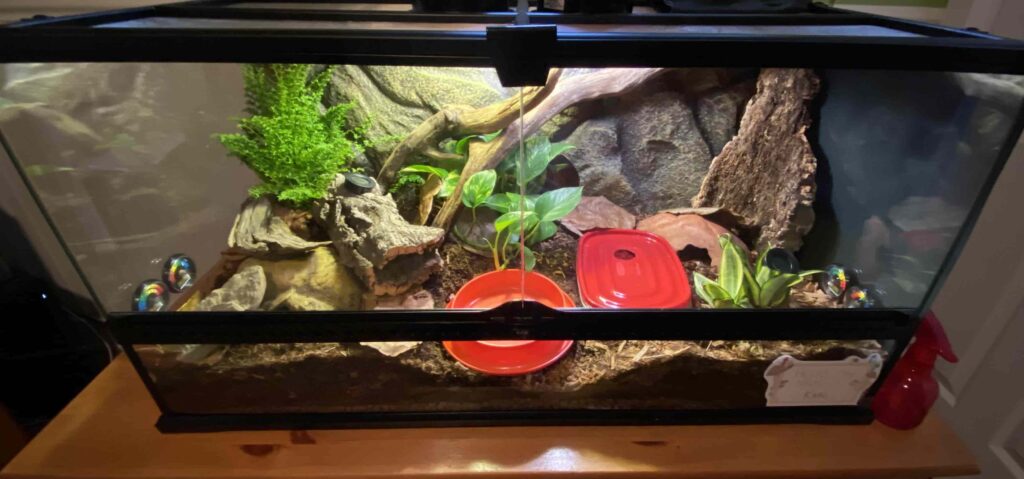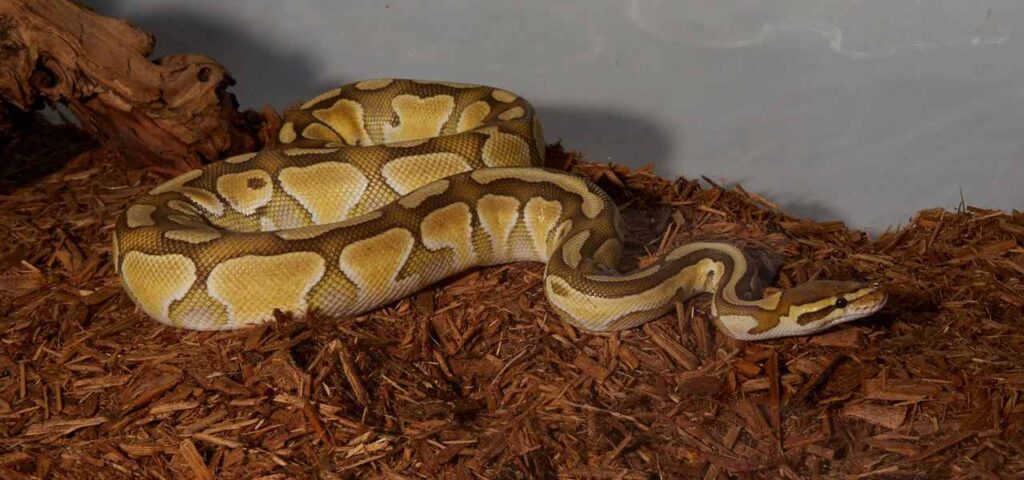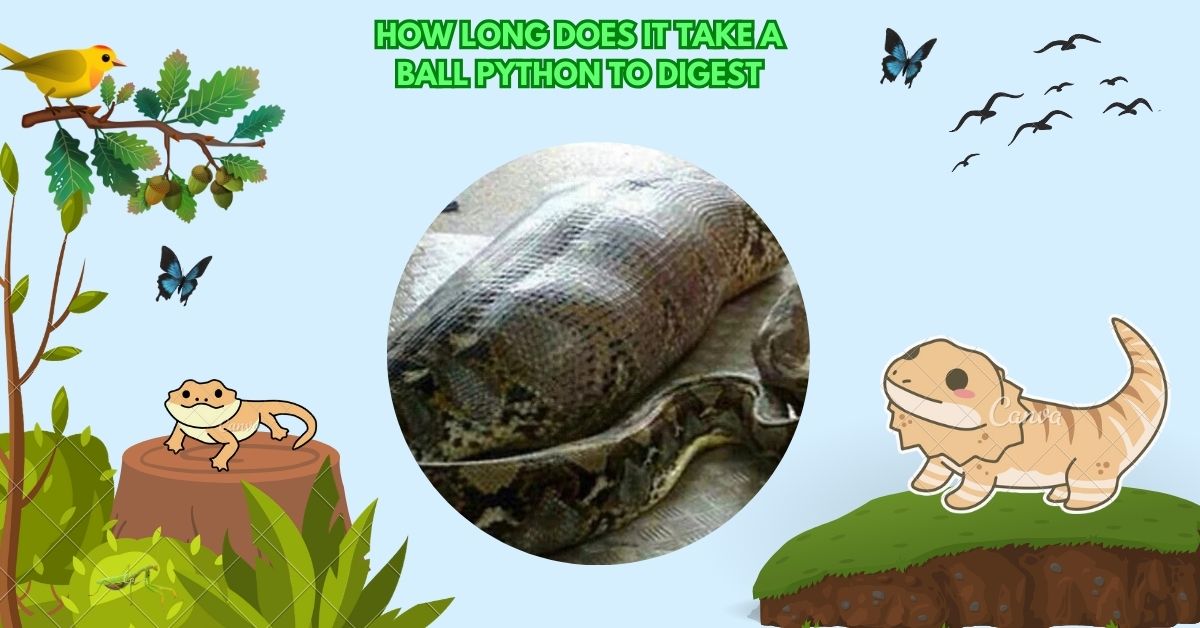Ball pythons are known for their docile nature and unique behaviors, one of which includes burrowing.
Ball pythons burrow to feel secure, especially if hides are too big, not dark enough, or the environment is new. It’s normal behavior and may also help them find moisture in the substrate.
This comprehensive guide delves into the reasons behind this behavior, helping you understand and ensure the well-being of your pet.
Understanding Natural Burrowing Behavior
In the wild, ball pythons (Python regius) inhabit the grasslands and forests of West and Central Africa. They often seek refuge in rodent burrows or other underground shelters to escape predators and extreme temperatures . This natural inclination to burrow provides them with security and a stable environment.
Common Reasons for Burrowing in Captivity

1. Seeking Security and Comfort
Ball pythons are inherently shy creatures. In captivity, if they feel exposed or stressed, they may resort to burrowing to find a sense of security. Ensuring your enclosure has adequate hides on both the warm and cool sides can help alleviate this behavior.
2. Temperature Regulation
Maintaining the correct temperature gradient is crucial. If the enclosure is too hot or too cold, your snake might burrow to find a more comfortable temperature. The ideal temperatures are:
| Area | Temperature Range |
| Warm Side | 88–92°F (31–33°C) |
| Cool Side | 75–80°F (24–27°C) |
Regularly monitor temperatures using accurate thermometers to ensure consistency.
3. Humidity Levels
Humidity plays a vital role in a ball python’s health, especially during shedding. If the humidity is too low, your snake may burrow to find a more humid microclimate. Aim for a humidity level of 50–60%, increasing to 70% during shedding periods .
4. Stress and Environmental Factors
Various factors can stress your ball python, leading to burrowing behavior:
- Lack of Hides: Insufficient hiding spots can make your snake feel exposed.
- Excessive Handling: Frequent handling can cause stress.
- Bright Lighting: Too much light can make your snake feel vulnerable.
- Noisy Environment: Loud noises can be unsettling.
Addressing these factors can help reduce stress-induced burrowing.
5. Shedding Process

During shedding, ball pythons often seek secluded, humid areas. Burrowing can be a way to find such an environment, aiding in the shedding process. Providing a moist hide can assist your snake during this time.
6. Substrate Preferences
The type of substrate used can influence burrowing behavior. Some substrates, like coconut fiber or cypress mulch, allow for easier burrowing. If your snake enjoys burrowing, consider using substrates that facilitate this behavior.
7. Health Concerns
While burrowing is often natural, sudden or excessive burrowing can indicate health issues:
- Parasites: External parasites can cause discomfort.
- Respiratory Infections: Seeking warmth through burrowing might be a response to illness.
- Digestive Issues: Discomfort can lead to unusual behaviors.
If you suspect health problems, consult a reptile veterinarian.
Enhancing Your Ball Python’s Habitat

Creating an environment that caters to your ball python’s needs can reduce unnecessary burrowing:
- Provide Multiple Hides: Ensure there are hides on both warm and cool sides.
- Maintain Proper Temperature and Humidity: Use reliable equipment to monitor and adjust as needed.
- Use Appropriate Substrate: Choose substrates that allow for natural behaviors.
- Limit Handling: Especially during shedding or acclimation periods.
- Reduce Stressors: Minimize loud noises and bright lights.
FAQ
Why is my ball python digging tunnels?
Your ball python may be digging tunnels to feel safe, stay warm, or hide. It’s a normal, natural behavior that helps them feel comfortable.
How long do ball pythons burrow?
They can burrow for a few hours to several days, especially if they’re scared, shedding, or adjusting to a new home. It’s usually nothing to worry about.
What does it mean when a snake burrows?
Burrowing means your snake wants to feel safe, cool down, warm up, or hide. It’s how they protect themselves and feel less stressed.
How do I know if my ball python is unhappy?
If your ball python hides too much, won’t eat, hisses, or acts restless, it may be unhappy. Check its setup and try to reduce stress.
How do I know if my ball python has mites?
If your ball python soaks often, rubs its face, has tiny black dots, or seems itchy, it might have mites. A reptile vet can help.
How do you know if a ball python is starving?
If it’s active, searching a lot, losing weight, or striking at everything, it may be very hungry. Check feeding schedule and food size.
How do I know if my ball python has scale rot?
Look for red, swollen, or cracked scales, or if the belly looks dark and mushy. Bad smells or wounds mean it’s time to see a vet.
Why is my ball python attacking me?
Your ball python may bite if it’s scared, hungry, or feels threatened. Give it space, move slowly, and avoid handling after feeding or during shedding.
Conclusion
Understanding your ball python’s burrowing behavior is essential for ensuring its health and comfort. While burrowing is often a natural and harmless activity, it’s crucial to monitor for any signs that might indicate stress or health issues. By providing an environment that meets your snake’s needs, you can ensure a happy and healthy life for your pet.





